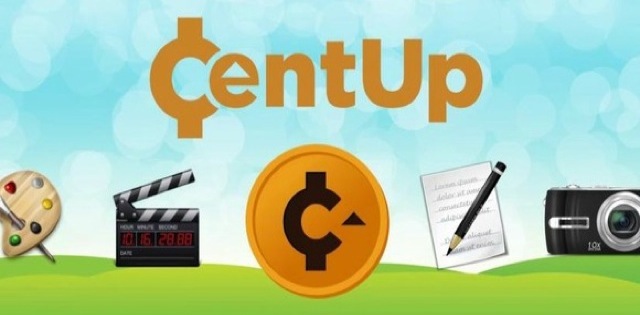Insights from CTV leaders at Dentsu, Horizon Media and more

People are kind of lazy, and the Internet makes it even easier to be lazy. Especially when it comes to social activism: It’s become all too easy to join a Facebook page for a good cause or tweet a story about an issue or like a post about standing up for something, but that doesn’t really amount to actual activism. Agency employees Len Kendall, Tyler Travitz and John Geletka want to change that with their new side project CentUp.
Kendall and Travitz are digital directors at Golin Harris, and Geletka is a digital strategist at Avenue. They crafted CentUp as a social sharing button that lets people share content and simultaneously support charities and authors of the content. Kendall took time with Digiday to talk about his new project and how it capitalizes on so-called “slacktivism.”
What gave you the idea for CentUp?
My colleagues and I were in the midst of trying to develop a new crowdsourced information-sharing site. It wasn’t getting a lot of traction, which led us into a deep discussion of how the modern Web user is pretty impatient and/or lazy. That insight led us into a a lengthy discussion of how we could monetize the concept of “slacktivism,” a term often used to describe people’s willingness to support a cause but generally not beyond a click or a share. The further down this topic we went, the more the idea of CentUp appealed to us. So we dropped our former concept and pivoted all our resources into CentUp. We uncovered data that showed there are over 5 billion “like”-type actions a day and there are literally billions of dollars being given to causes online each year. This is an important intersection that we aim to address.
How does CentUp actually work? How do authors and charities get involved so they can benefit from CentUp?
It’s very simple for the user. After the first sign up, which requires a Facebook account and a payment method, people will be able to hit the CentUp button on any site that installs the button and will be able to show their appreciation for a piece of Web content (something they might have clicked “like” for before) and, in doing so, also throw a few cents to the author and their choice of charity. From a publisher perspective, a blogger, for example, would be able to install the CentUp button on his or her site to start earning a bit of income, but also do some good in the world while sharing his or her content. We’re already having discussions with some major charitable organizations in the U.S. We’ll launch with a few to start, but ultimately we’d like users to have a large array of causes they can direct their cents towards.
How does payment work when people decide to “CentUp” something?
It’s similar to iTunes. When you buy apps, you usually don’t get billed immediately. Apple will wait until you hit a certain amount and then send you a bill that bulks everything together. CentUp will operate in a similar fashion. You donate cents across the Web, the counters go up, ultimately when you hit a certain level, say $10 to $20, you will get charged. We’re still working on finalizing our payment partner. As you can imagine, we want to make sure transactions are both incredibly easy for the user, but also we want to make sure we’re minimizing our fees.
It’s a cool idea to actually put some money where your mouth is when it comes to social actions like liking and tweeting online content, but do you think people will actually want to do that?
We think that donating a penny or two is such a small amount, that people won’t think twice about paying into this system. From our initial research, Gen Y especially wants to have more opportunities to give more online, but they often forget or don’t feel inspired enough to donate on a regular basis. We believe that CentUp will become a more frequent reminder to give because it will be connected with content that people are passionate about. The transactions will be much smaller than what people are used to, but the frequency will be much higher.
A piece of content would need 100,000 “CentUps” just to raise $1,000. Do you think one cent donations will actually make a difference?
A penny will be the default, but the button will let people increase the amount to anything they want. Ultimately, we want to grow the user base quickly and keeping the donation amounts low will help us do that. Down the road, we see people changing their own defaults to a higher level, and we also see people giving a lot more via the CentUp button during crisis situations or times when a certain constituency really needs timely monetary support. We’re actually using a crowdsourcing tool called Thunderclap to raise awareness of CentUp. We’ve already reached our goal for supporters 100 percent, but the more people that join the better.
More in Media

Digiday+ Research: Publishers pull back their dependence on digital revenue
After a year in which publishers shifted their revenue dependence away from traditional channels and toward digital channels, 2025 has seen a shift back toward more of a balance between traditional and digital revenue sources.

LinkedIn makes it easier for creators to track performance across platforms
Creator data is becoming more accessible to third-party vendors via a new API — another step in LinkedIn’s creator platform evolution.

Ad Tech Briefing: The ‘plumbers’ posing as the unlikely saviors of the internet
After several false dawns, can Cloudflare’s ‘anti-AI scraping tool’ finally offer publishers a road to commercial redemption?





